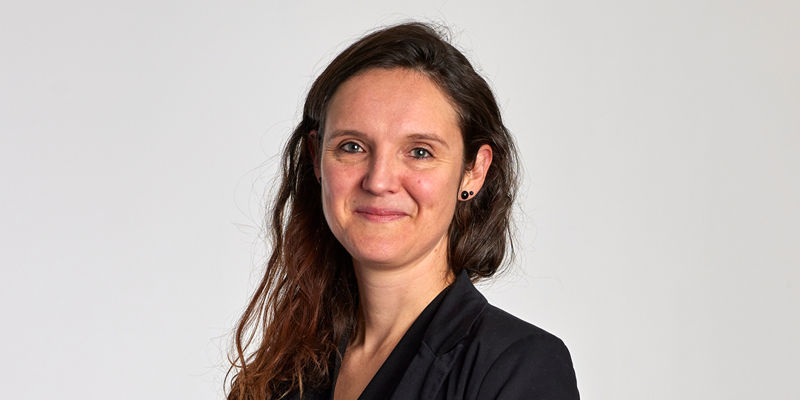The demand for high- and ultra-high-resolution 3D towed-streamer seismic has increased due to a shift towards near-field hydrocarbon exploration and the increasing need for 3D seismic as part of the energy transition. Improved seismic data quality, better spatial sampling, higher trace density, and improved near-offset coverage is needed. 3D seismic data is also required for carbon capture and storage (CCS) development projects, site surveying for offshore wind farms, marine mineral exploration, and nuclear waste management.
These relatively new applications require shallow subsurface targets to be imaged with high-resolution data of the near surface and even the seabed. The shallower the targets the more important the near offset coverage and dense spatial sampling in 3D seismic acquisition becomes. Both factors are cost drivers and thus advanced technologies and solutions are needed to enable cost-effective 3D acquisition. Innovative towing configurations that combine wide-tow multi sources with multisensor streamer spreads have become the new standard for hydrocarbon exploration in Northern Europe. These acquisition solutions enable accurate imaging from very shallow targets and geohazards to deep geological structures in a cost-effective manner.
The improved near-offset coverage and the dense spatial sampling provided by the wide-tow multi-source configurations enable subsurface imaging with temporal and spatial resolution in the meter range. Equivalent survey design concepts have recently been utilized for high-resolution site characterization for carbon storage or ultra-high-resolution 3D site surveying for offshore wind farms.
Revisiting Wide-Tow Multi-Source Technology
Over the years PGS has introduced new techniques for high-resolution streamer acquisition and imaging of shallow targets and the near surface. A key step was the transition from narrow to wider source separations and using multiple sources (triple, quad, penta etc.). The wide-tow multi-source solution resulted in improved near-offset coverage without increasing acquisition costs.
The figure below illustrates the concept for a quad-source configuration in front of a streamer spread with 50 m streamer separation. In this example, the source separation for the standard narrow source tow is 12.5 m, and for the wide-tow alternative, it is increased to 62.5 m. If the sail line separation is made a function of the source geometry (4 x 62.5 m, i.e., 250 m), the lateral source line spacing (62.5 m) becomes regular for the entire survey area. As illustrated, the wide-tow alternative delivers regular dense source line spacing in combination with the high-density streamer spread and provides significantly improved near-offset coverage compared to the narrow source geometry.
The wide-tow quad-source configuration evenly distributes the nearest offset traces, reducing the near-offset gaps. This balanced sampling is a better starting point for regularization and interpolation techniques and offers a symmetrical bin size of 6.25 m x 6.25 m. This concept can be extended to higher source count configurations and high-density streamer spreads with significantly more streamers.
High-density streamer configurations of 10 streamers combined with a standard quad-source set-up (left) and a wide-tow quad-source set-up (right). The wide-tow source separation is 62.5 m, resulting in a total source spread width of 187.5 m. The streamer separation is 50 m in both examples. The red dashed lines indicate the center of each sail line. Crossline coordinates are along the x-axis, and source-receiver offsets are along the y-axis. The wide source configuration provides improved near-offset coverage.
High-Resolution Hydrocarbon Exploration Surveys
The wide-tow multi-source method was successfully tested offshore Norway in 2019 and 2020. A wide-tow triple source with a source separation of 112.5 m, along with a 12 x 84 m streamer spread was deployed in the Viking Graben, North Sea in 2019. The method enabled both optimized near-offset coverage and improved acquisition turnaround. The figure below shows a comparison between legacy data acquired with a 10 x 75 m streamer spread and a standard dual source in 2011 and the result of the 2019 seismic survey with a wide-tow triple source. The latter acquisition setup enabled seamless shallow imaging despite the wider streamer spread and higher acquisition efficiency.
Comparison of time slices at ca.200 ms two-way traveltime and (inset) shallow seismic cross sections. The example shows significant footprint and illumination gaps (left) when acquired with a standard dual source and a 10 x 75 m streamer spread in 2011. The wide-tow triple source configuration used in the same area in 2019 enabled seamless shallow imaging and higher efficiency. The orange arrows indicate the respective positions of the slices and the cross-sections.
In the following year, the number of distributed sources increased from triple to penta in an exploration survey in the Hammerfest Basin/Barents Sea. A high-density multisensor 16-streamer spread was combined with a wide-tow penta source. The separation between adjacent source arrays was 78.75 m, resulting in a total source spread width of 315 m. The inline offset between the sources and the streamer front-end was as short as 65 m. The multisensor streamer spread consisted of 16 multisensor streamers of 7 km length towed with 56.25 m nominal separation and enabled in combination with the penta source a processing bin size of 6.25 m x 6.25 m.
The shallow sub-surface was imaged without compromising efficiency, thanks to the wide-tow multi-source solution. In both surveys, high-density multisensor streamer spreads were complemented by 10 km-long streamer tails, which delivered optimal wavefield sampling for high-resolution imaging and refraction full waveform inversion (FWI) velocity model-building.
The multisensor streamers were towed at 25 m depth for high-density spread and 28 m depth for 10 km long streamers to reduce tangling risk and minimize weather-related downtime. The receiver ghost problem was solved by combining pressure and particle motion recordings, allowing deeper tow without limiting the spectral bandwidth.
Since 2019, the wide-tow multi-source method has been utilized in more than 20 commercial seismic programs. In some cases, source-over-the-spread solutions were used to achieve close-to-zero offset coverage for imaging of shallow targets. The method has also been extended to commercial applications with non-uniform towed-streamer geometries. More recently, CCS development surveys and site surveys for offshore wind farms have successfully adopted the same survey design concepts although at smaller scales.
CCS High-resolution Development Survey with Wide-tow Quad Source
The wide-tow quad source configuration shown in the first figure was the starting point for a novel high-resolution survey over three CCS structures in the Southern North Sea, that was designed and acquired for the Northern Endurance Partnership (operated by BP) in 2022. Survey design criteria for CCS can be different from hydrocarbon exploration and reservoir monitoring and are mostly driven by the need to image shallower targets. The typical geophysical objectives are the quantification of the CO2 storage capacity, an assessment of the integrity of the seal, detection of shallow hazards but also injection well planning, and establishment of baseline datasets for future seismic monitoring.
One of the specific challenges for the Northern Endurance project was accurate imaging and characterization of the geological formations above the CO2 storage reservoirs. Seismic modeling indicated that imaging of the near subsurface in the environment with water depths as shallow as 20 m required uniform coverage of near offsets at least in the 30-60 m offset range. The wider tow of the quad source enables an optimized near-offset coverage in the crossline direction (first figure right side), it was still a challenge to meet the nearest offset requirement given the typical towing solution with sources circa 65 m in front of the spread. The inline offset challenge was solved by moving the sources over the front ends of the streamers.
The final configuration had nine streamers spaced 50 m apart with a quad source separated by 62.5 m. The source inset relative to the streamer front ends was around 130 m. The photo and configuration drawing below show the innovative towing solution on the Ramform Hyperion during the Northern Endurance 3D high-resolution survey. The deeper tow of multisensor streamers was crucial for broadband acquisition and efficiency even in rougher weather. The shallow water restricted the tow depth to 15 m and to 12 m in the most challenging part of the survey area.
The survey was acquired efficiently and resulted in high data fidelity, enabling 3D imaging of the shallow overburden including the seabed.
Schematic illustration of the nominal vessel configuration and a photo of Ramform Hyperion acquiring the high-resolution CCS development survey for the Northern Endurance Partnership offshore UK in 2022. The configuration consisted of nine multisensor streamers with 50 m separation and a wide-tow quad source that was towed over the front end of the streamer spread. The resulting nominal acquisition bin size was 6.25 m x 6.25 m.
Ultra-High-Resolution 3D Site Surveys for Offshore Wind Farms
Planning offshore wind farms requires ultra-high resolution seismic for site surveying to characterize the near surface around the potential locations for wind turbines. The upper 100 m of the subsurface must be imaged in great detail for the identification of shallow geohazards and the detection of boulder accumulations. A key part of the risk assessment.
Until recently, offshore wind farm seismic site surveys were mainly conducted using 2D seismic lines. These 2D lines covered the development areas in a grid-like pattern with, e.g., 200 m line separation in one direction and 2D tie lines with larger spacing (e.g., 500 m) in the orthogonal direction. An initial assessment was followed by a refinement phase where additional lines were acquired resulting in a denser grid of 2D lines.
Ultra-high-resolution 3D seismic has the potential to shorten the overall cycle time from initial site evaluation to the installation of the turbines and to provide better 3D subsurface images and more accurate characterization of the near surface.
However, the seismic wavefield must be sampled at a higher sampling rate temporally (kHz range) and much denser spatially (bin sizes in the one-meter range) for seismic site surveys compared to the hydrocarbon exploration and CCS development surveys discussed in the previous sections. The configurations must consequently be scaled down significantly, and at the same time, a certain level of efficiency must be maintained to make ultra-high resolution 3D seismic a commercially viable alternative to the traditional 2D approach.
The P-cable system is now used in energy transition applications and utilizes short (typically 50-100 m long) hydrophone-only streamers towed from a cross cable for ultra-high-resolution seismic surveys. The system uses sparker or boomer sources and a shallow tow depth to emphasize high-frequency content.
Combining P-cable or an equivalent ultra-high resolution streamer technology with the proven wide-tow multi-source approach is what PGS recommends and is demonstrated in the examples below.
In the example on the left below, 10 short streamers with a separation of 6.25 m are combined with a wide-tow triple source with circa 10 m source separation. The resulting nominal acquisition bin size is circa 1 m and the sail line separation is 31.25 m. The example on the right is a more efficient configuration. The number of streamers is increased to 14 and the streamer separation to 12.5 m. The source solution comprises a wide-tow quad source with approximately 22 m source separation. The configuration has a nominal sail-line separation of 87.5 m, and an (effective) crossline bin size in the range of 1.5 m to 3 m, depending on near-offset sampling requirements, i.e., acquisition efficiency has been gained while the spatial sampling has been relaxed.
The 3D offset distribution resulting from acquiring six adjacent sail lines with the 10 x 6.25 m streamer configuration with the wide-tow triple source is shown above. The corresponding 3D offset distribution resulting from three sail lines for the more efficient 14 x 12.5 m streamer configuration with the wide-tow quad source is shown for comparison. The analysis demonstrates that the denser configuration delivers a good and uniform coverage of the nearest offset in the 0 m to 30 m offset range and fully populated offset classes for the larger offsets while the 14 streamer configuration is approximately three times more efficient while the sampling of the nearest offsets has been relaxed.
Setting the Seismic Standard for the Energy Transition
The energy transition has increased the demand for high- or ultra-high resolution 3D seismic solutions to image shallow targets. Combining the wide-tow multi-sources method with high-density streamer spreads enables the cost-effective acquisition of 3D seismic data with good coverage of the nearest offsets and dense spatial sampling. The concept was successfully proven in marine seismic exploration surveys acquired in the Viking Graben and the Hammerfest Basin. These novel surveys delivered high-quality images of the near surface just below the seabed without the acquisition footprint typically caused by the lack of near offsets.
The same survey design method can be utilized for high-resolution 3D studies for CCS site characterization, or offshore wind farm site surveying. As near-surface seismic or seabed mapping in shallow water requires recording of seismic data with close-to-zero offset, the inline distance between sources and streamers can be minimized by moving the sources over the front end of the streamer spread as demonstrated in a novel quad-source acquisition over the Northern Endurance CCS structures. We have also illustrated how a down-scaled configuration (P-cable in combination with the wide-tow multi-source method) can deliver ultra-high resolution seismic with spatial sampling in the one-meter range and thus become a commercially viable 3D solution for offshore windfarm site investigations.

Contact Martin Widmaier

Contact Carine Roalkvam
